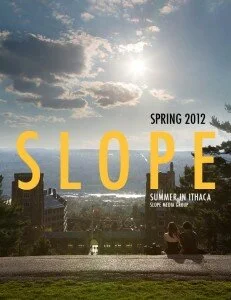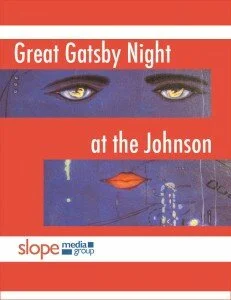Poetry: A Lens through which to View the World
October 2, 2012 — [caption id="attachment_20995" align="alignright" width="257"]Poetry readings. The idea connotes images of cozy coffee shops packed to the gills with bodies strew about haphazardly, perched on askew furniture. Aspiring artists sip steaming beverages while their attention is deftly held by the martyr at the microphone—the one soul brave enough to share their most intimate thoughts written out in verse—feeling like they’ve somehow captured the essence of heartbreak/life/jealousy/love better than anyone else ever has. Their brief moment of hokey gravity attached to clichéd words culminates with a chorus of snaps from the audience, lest the noise of palms slapping together in celebration of artistry disturb the trance into which the listeners have fallen.
At least that’s what the idea of poetry readings used to evoke, before I attended the first installment of the Barbara and David Zalaznick Fall 2012 Cornell Reading Series—a one-hour reading by esteemed poet Claudia Emerson. What struck me about Ms. Emerson was her extreme honesty and lack of ostentation. When she entered Hollis E. Cornell Auditorium in Goldwin Smith Hall on September 20th, she casually moved to the first row of seats like a student amongst peers showing up for her next class. She chatted amicably with her neighbors, and if I didn’t know what she looked like, I would have still been searching the entryway for the poet of the hour to make an appearance.
English Prof. Lyrae Van Clief-Stefanon introduced Ms. Emerson, a 2006 Pulitzer Prize winner for her collection Late Wife. Van Clief-Stefanon set the tone of the event, expounding on her personal connection to Emerson. As a former student, Van Clief-Stefanon found a “safe space” with Emerson, who was instrumental in coaching her through her development as an artist and her experience with sexual assault. Then Claudia Emerson took to the podium and chose to read to us from her most recent published work Secure the Shadow. Her slight southern drawl coupled with her jarringly beautiful use of inverted word order (“She could see clearly herself in its blade”—from "Half Life: Pittsylvania County, Virginia"), alliteration, and metaphor, breathed life into the words, touching on themes as deep as her family’s struggle with cancer, her childhood growing up in Chatham, Virginia, and the world’s discovery of the largest uranium deposit on the East Coast.
Emerson began each poem with some contextual background—for “Late April House Fire along Interstate 81”, she used evocative imagery and a powerful metaphor to compare the consumption of a house by flame to her brother’s surrender to colon cancer. In “It”, a poem about her family’s experience with the Vietnam War, she examines scenarios from different perspectives, even if they didn’t happen the way she delineates. “Your loyalty is to the poem,” she said, on the topic of truth-altering in verse. However, for Late Wife, a book of confessional poetry, Emerson maintained a tortuous honesty in her writings—it was the most candid she had ever been, even if itwas “exhausting”, as the book digs into her transition from life with her ex-husband to her newfound solitude and relationship.
As a writer, Emerson is not a fan of the first person, loves a long sentence, and “dense language”—she often goes for sound before form when arranging her lines. While some of these methods break the conventions of poetry writing, Emerson proves that the craft is what you make it. Her current technique is to write in prose form, and then comb through the narrative for natural line breaks. She also utilizes a dictionary to “collect” words she can use for the perfectly descriptive diction she craves.
When asked if she “sees a poem in everything, and, if so, does that ever get annoying?” she responded with the sage wisdom of a seasoned poet: “I don’t always go about life saying ‘Aha! There’s a poem in that!’” but often times there will be moments that she knows she has to write about, even if she doesn’t particularly want to. “Poetry is the writer’s way of organizing the chaos of life through language,” she added. It’s hard because the writer wants to capture every moment that strikes them like the photographer who is constantly snapping shots (her penchant for daguerreotypes, primitive photographs of deceased loved ones, is evidenced in the title of Secure the Shadow, a term that describes this kind of photo art). The difficulty, Emerson says, is that nothing will ever be as beautiful as it is in real life, and sometimes it doesn’t pay to try to capture it. Sometimes, people just have to live in the moment. But, she qualified, poetry is its own lens through which writers view the world, so it is very hard to just put that lens down.



